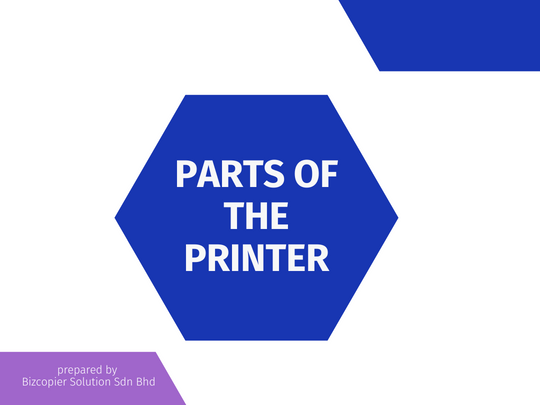Parts of the Printer

The printers in your office that print correspondence, invoices, and reports contain hundreds of functional components. Printers vary in price, size, and capability, but they share many components. Paper storage, a feeder to feed paper into the printer, a printing mechanism, and electronics to control the entire process are all standard features of printers.
Paper Trays
Printers have at least one tray – and sometimes several trays – where paper is stored for printing. Simple desktop printers typically have a single tray that can be adjusted to accommodate different sizes of paper, envelopes, and other materials. A small printer tray usually holds 100 to 250 sheets. A larger printer, suitable for a large group of users, has cassette trays that can hold thousands of sheets. It may also include a manual feeder tray for envelopes and other special forms.
Feed Mechanism
The feed mechanism of the printer takes a sheet of paper from the tray and feeds it through the print mechanism. A set of rubber rollers on the feed mechanism is designed to reliably pull single sheets from the tray’s top. The printer’s electronics send timing signals to the feed mechanism, so when one sheet is finished, the printer replaces it.
Laser Print Mechanism
A metal drum, a laser, and optics to reflect the laser comprise the print mechanism of a laser printer. The optics scan the laser beam across the drum’s surface, “drawing” text and graphics in the form of a grid of tiny dots. The light-sensitive surface of the drum reacts to the laser by accumulating a charge of static electricity. Toner powder only adheres to the drum where static electricity holds it. The powder melts as the drum heats up, and the print mechanism presses it onto a sheet of paper.
Inkjet Print Mechanism
An inkjet printer sprays ink precisely from a cartridge or set of cartridges that move back and forth across a sheet of paper. Because the cartridge contains many active components, an inkjet print mechanism is straightforward, consisting only of a motor-driven belt that transports the cartridge.
Electronics
A microprocessor and memory, as well as a control panel and other components, comprise the electronics of a printer. A document is received from the user’s computer and converted into a series of tiny dots that form the image on the page by the microprocessor. It also regulates the timing of the feed and printing mechanisms and stops the printer if a paper jam is detected. The control panel allows you to pause, restart, and test the printer, as well as change its settings.
Output Bins
Printed sheets are deposited in one or more output bins. Most printers have a single bin where pages are neatly stacked. More sophisticated printers have two or more bins for organising multiple print jobs or collating report pages. When the output bin is full, a switch may be activated, causing the printer to stop. This keeps pages from falling off the top of a stack and scattering across the floor.

*Other Model Available
RICOH MPC3503/ MPC5503 | RICOH MPC3504/ MPC5504
CONTACT US: 03-3341 6296 | 018-788 6296 | 018-228 6296





Recent Comments